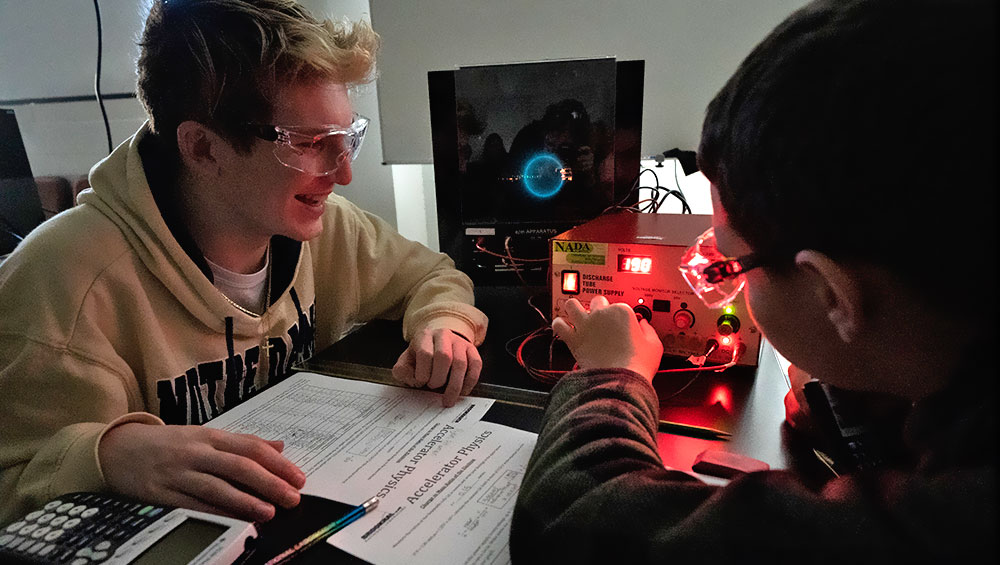Accelerator Science

Brookhaven National Lab's Relativistic Heavy Ion Collider (RHIC) uses powerful electric and magnetic fields to accelerate charged particles around 2.4-mile ring, helping scientists probe the fundamental building blocks of matter. In this session, students will use table-top particle accelerators with the help of BNL staff to track beams of electrons. They’ll collect and graph their data, determine the line of best fit, and calculate the charge-to-mass ratio of the electron — a key concept in accelerator design.
Vocabulary: acceleration, attract, charge, electron, energy, ion, magnetism, repel, speed
| Session Information |
|---|
|
To request field trip dates, visit https://oepreg.bnl.gov/.
To explore programs listed in the ESBOCES Exploratory Enrichment catalog and to submit a BOCES contract request, please visit BOCES EE – Brookhaven Lab
Click here to download a teacher guide for this program.
New York State Standards
NYS Science Learning Standards
|
Disciplinary Core Ideas |
Crosscutting Concepts |
Science and Engineering Practices |
|
PS2.B: Types of Interactions |
Cause and Effect |
Planning and Carrying Out Investigations |
Next Generation English Language Arts Learning Standards
|
Speaking and Listening |
Language |
|
Comprehension and Collboration |
Vocabulary Acquisition and Use |
Next Generation Mathematics Learning Standards
|
Algebra I: |
|
Reason quantitatively and use units to solve problems |
AP Physics 1 and 2
|
Physics 1 Essential Knowledge |
Physics 2 Essential Knowledge |
|---|---|
|
1B.3 The smallest observed unit of charge that can be isolated is the electron charge, also known as the elementary charge. 3.C.2 Electric force results from the interaction of one object that has an electric charge with another object that has an electric charge. 4.C.1 The energy of a system includes its kinetic energy, potential energy, and microscopic internal energy. Examples include gravitational potential energy, elastic potential energy, and kinetic energy. 5.A.2 For all systems in all circumstances, energy, charge, linear momentum, and angular momentum are conserved. For an isolated or a closed system, conserved quantities are constant. An open system is one that exchanges any conserved quantity with its surroundings. |
1.A.2 Fundamental particles have no internal structure. 1.A.3 Nuclei have internal structures that determine their properties. 1B.3 The smallest observed unit of charge that can be isolated is the electron charge, also known as the elementary charge. 2.C.5 Between two oppositely charged parallel plates with uniformly distributed electric charge, at points far from the edges of the plates, the electric field is perpendicular to the plates and is constant in both magnitude and direction. 2.D.1 The magnetic field exerts a force on a moving electrically charged object. That magnetic force is perpendicular to the direction of velocity of the object and to the magnetic field and is proportional to the magnitude of the charge, the magnitude of the velocity, and the magnitude of the magnetic field. It also depends on the angle between the velocity for angles of 0°, 90°, or 180° and qualitative for other angles. 3.C.2 Electric force results from the interaction of one object that has an electric charge with another object that has an electric charge. 3.C.3 A magnetic force results from the interaction of a moving charged object or a magnet with other moving charged objects or another magnet. |
Teacher Information
These programs are registered with Eastern Suffolk BOCES





